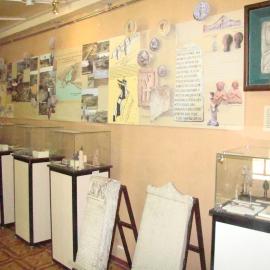
The exhibition has been open since May 2016 and is dedicated to the future significant event nationwide: the September elections to the State Duma of the Russian Federation. It introduces visitors to information about the earliest states in the South of the current territory of Russia and specifically the Azov-Don region.
Among such states were the city-polis founded by the ancient Greeks in the VII-VI centuries BC as a result of colonization of the Northern Black Sea region. The centers that arose on the shores of the Cimmerian Bosporus (Kerch Strait) and in the northeastern Black Sea region, in the 5th century BC, united into the Bosporan Kingdom with the capital Pantikapei (present Kerch in the Crimea). The most significant centers of the Asian part of the Bosporus (the border of Europe and Asia passed through the Strait in ancient times) can be called Phanagoria and Hermonassa on the Taman Peninsula, as well as Gorgippia (Anapa).
It was the Bosporan Greeks in the III century BC who founded the city of the same name at the mouth of the Tanais River, which became the farthest northeastern center of the ancient Ecumene and existed with some interruptions for almost 800 years. According to the largest researchers, in the early period the city was a policy. But at the very end of the I century BC it became part of the Bosporan Kingdom. Nevertheless, in the first centuries AD, some features of polis democracy were preserved here – obviously, the privileges left to the Tanaites by the supreme power. Using archaeological data, authentic finds and reconstructions, the exhibition demonstrates a very extraordinary management system and associated traditions of existence – features that distinguished this city against the background of the general political and cultural space of the Mediterranean-Pontic basin of those times.
Time:
temporary exhibition
